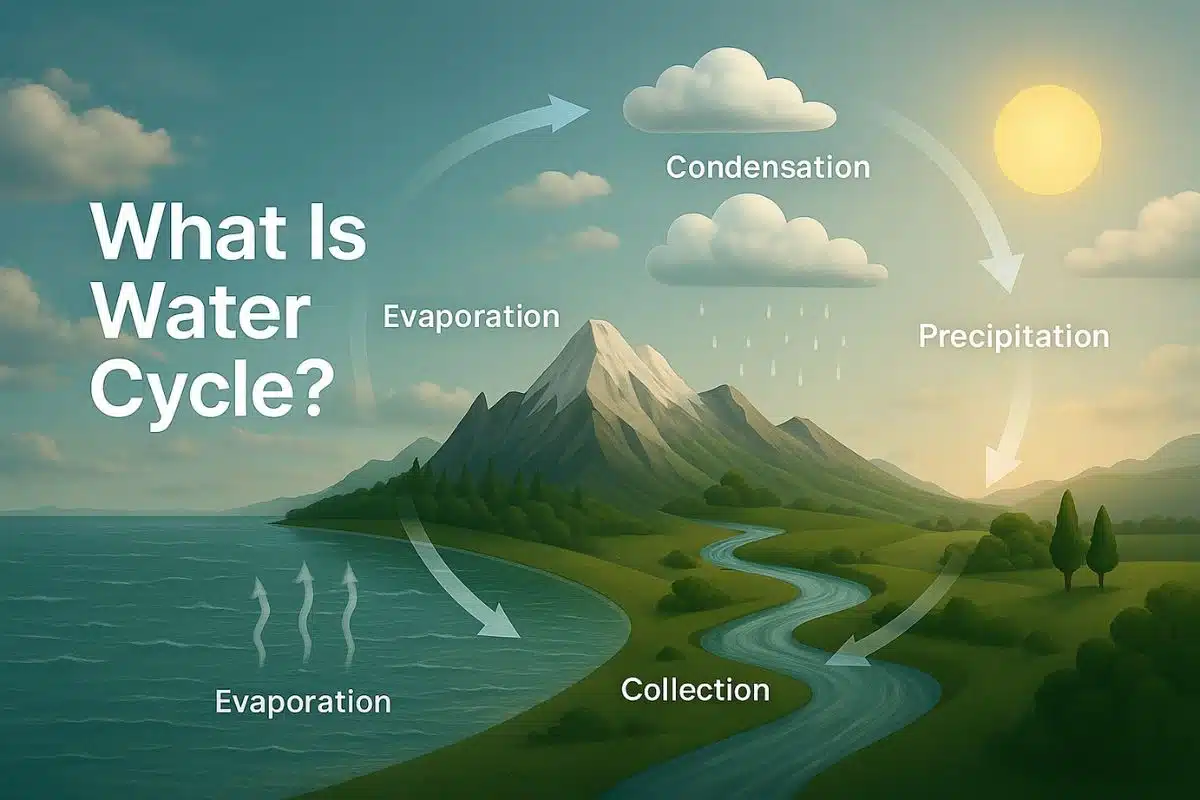Have you ever wondered where rain comes from or how rivers keep flowing? The answer lies in the water cycle, a natural process that keeps water moving around our planet. Understanding the water cycle is essential because it affects weather, plants, animals, and even our drinking water.
In this blog, we’ll break down what is water cycle, its stages, and why it’s so important—all in a simple, student-friendly way. Let’s dive in!
What Is Water Cycle?
The water cycle (also called the hydrologic cycle) is the continuous movement of water on, above, and below Earth’s surface. Water changes forms—liquid, gas (vapor), and solid (ice)—but it never disappears. Instead, it keeps recycling in a never-ending loop.
This process is powered by the sun, which heats water and causes it to evaporate. The water cycle ensures that all living things get the water they need to survive.
Stages of the Water Cycle
The water cycle consists of four main stages:
1. Evaporation
Evaporation happens when the sun heats water from oceans, lakes, and rivers, turning it into water vapor (a gas).
-
Example: Puddles drying up after rain.
-
Fun Fact: About 90% of water vapor comes from oceans.
2. Condensation
As water vapor rises, it cools and turns back into tiny water droplets, forming clouds.
-
Example: Fog on a cold morning.
-
Did You Know? Clouds are made of millions of water droplets.
3. Precipitation
When clouds get too heavy, water falls back to Earth as rain, snow, sleet, or hail.
-
Example: Rainy days, snowstorms.
-
Fun Fact: The heaviest rainfall ever recorded was in India—1,825 mm in 24 hours!
4. Collection
Precipitation collects in rivers, lakes, and oceans, restarting the cycle. Some water seeps into the ground (infiltration), becoming groundwater.
-
Example: Rivers flowing into the ocean.
-
Did You Know? Less than 1% of Earth’s water is drinkable freshwater!
Here’s a simple table summarizing the stages:
| Stage | What Happens? | Example |
|---|---|---|
| Evaporation | Water turns into vapor | Drying wet clothes |
| Condensation | Vapor forms clouds | Morning dew |
| Precipitation | Water falls as rain/snow | Thunderstorms |
| Collection | Water gathers in oceans/rivers | Lakes filling up |
Why Is the Water Cycle Important?
The water cycle is crucial because:
- Supplies Freshwater – It provides drinking water for humans, animals, and plants.
- Regulates Climate – It helps control Earth’s temperature and weather patterns.
- Supports Ecosystems – Wetlands, forests, and oceans depend on it.
- Renews Water Sources – Without it, rivers and lakes would dry up.
Without the water cycle, life on Earth wouldn’t exist!
Fun Facts About the Water Cycle
- Earth’s water is billions of years old—the same water dinosaurs drank!
- A single cloud can weigh as much as 100 elephants!
- Only 2.5% of Earth’s water is freshwater (most is in glaciers).
- The water cycle has no start or end—it’s a continuous loop.
FAQs About the Water Cycle
1. What is the water cycle in simple words?
The water cycle is how water moves from the ground to the air and back again through evaporation, condensation, and precipitation.
2. What are the 4 main stages of the water cycle?
The four stages are evaporation, condensation, precipitation, and collection.
3. How does the sun power the water cycle?
The sun heats water, turning it into vapor (evaporation), which rises to form clouds.
4. Can the water cycle ever stop?
No, the water cycle is a continuous process that keeps Earth’s water balanced.
5. Why is the water cycle important for life?
It provides freshwater, supports ecosystems, and regulates weather.
6. How long does a water droplet stay in the ocean?
A single drop can stay in the ocean for thousands of years before evaporating!
7. Does pollution affect the water cycle?
Yes, chemicals and waste can contaminate water, harming plants, animals, and humans.
Conclusion
Now you know what is water cycle and why it’s so important! From evaporation to rainfall, this amazing process keeps our planet alive. Next time you see a cloud or feel rain, remember—you’re witnessing the water cycle in action!



